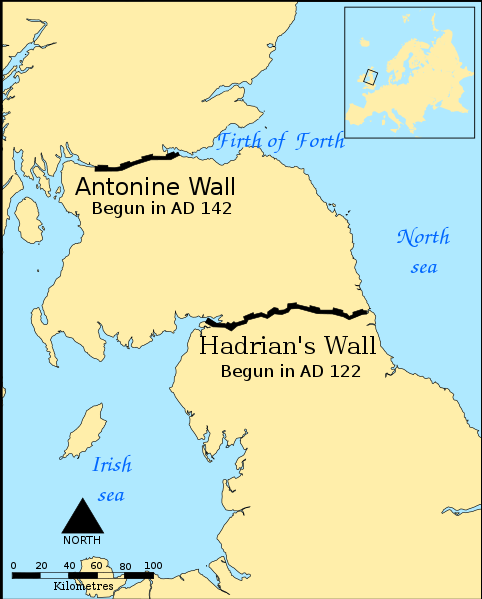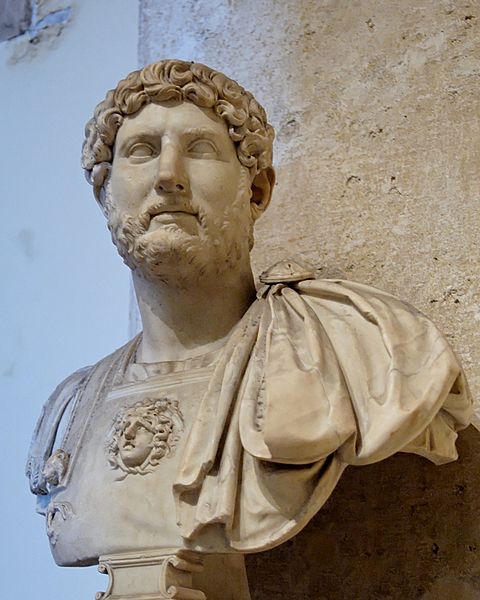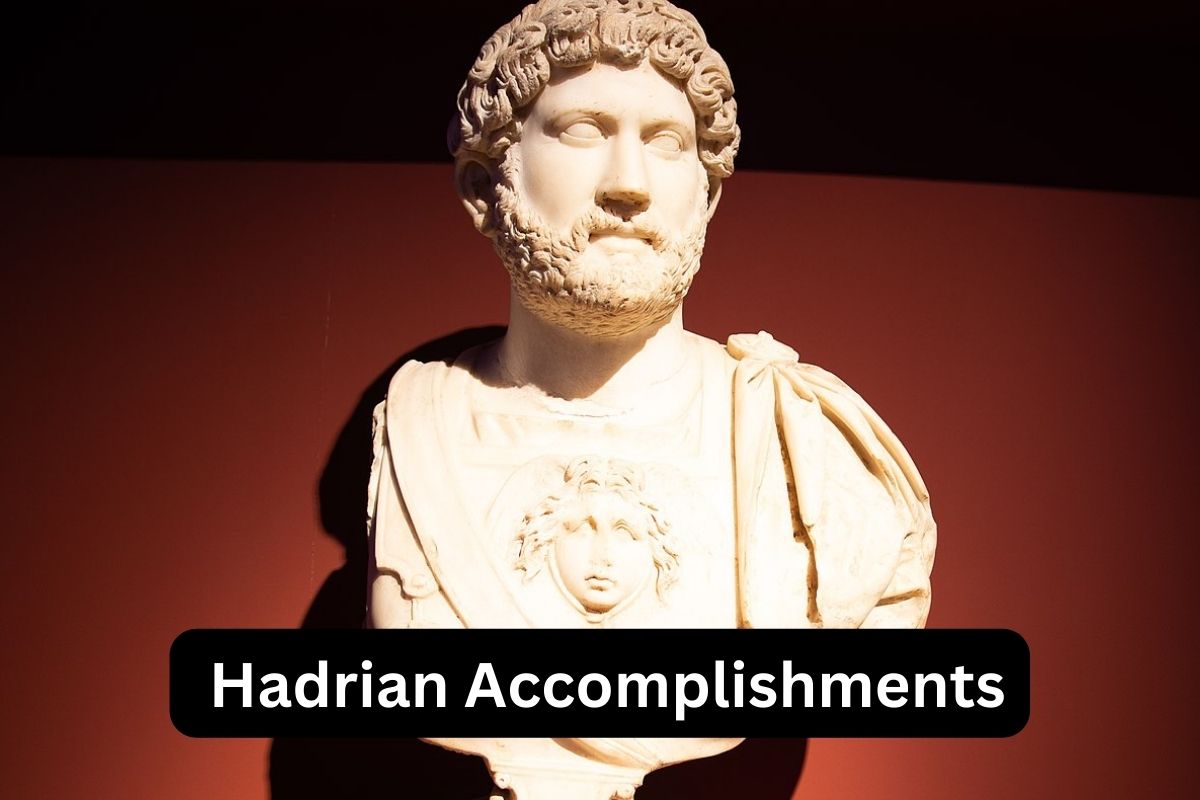Emperor Hadrian (76-138 AD) was a Roman emperor known for his military expertise, cultural patronage, and architectural achievements. He ruled from 117 to 138 AD and focused on consolidating and protecting the vast Roman Empire.
Hadrian traveled extensively, improved defenses, and promoted Roman culture. He commissioned notable construction projects, enacted legal and administrative reforms, and standardized Roman currency.
Hadrian’s reign left a lasting impact on the empire. He died in 138 AD and was succeeded by Antoninus Pius.
Accomplishments of Hadrian
1. Built Hadrian’s Wall in Northern Britain
Hadrian’s Wall was a monumental defensive fortification constructed under the orders of Emperor Hadrian. It stretched across the northernmost frontier of the Roman Empire in Britain, approximately 73 miles (117 kilometers) from coast to coast.
Also Read: Facts About Hadrian’s Wall
The wall was designed to mark the boundary and provide protection against invasions from the north. It featured guard towers, forts, and a well-structured system of defense.
The construction of Hadrian’s Wall displayed the empire’s military might and its commitment to maintaining control over the region.

2. Reconstructed the Pantheon in Rome
The Pantheon in Rome, originally built by Marcus Agrippa during the reign of Augustus, underwent a significant reconstruction under Emperor Hadrian’s patronage.
Hadrian wanted to create a grand architectural masterpiece, and he commissioned the renovation of the Pantheon to achieve that goal. The result was a stunning structure known for its iconic dome, which remains the largest unreinforced concrete dome in the world.
Also Read: Accomplishments of Antoninus Pius
The Pantheon’s design showcases the innovative engineering skills of the Romans, with its oculus, or central opening, allowing natural light to illuminate the interior.
Hadrian’s reconstruction transformed the Pantheon into a symbol of Roman architectural excellence and a testament to the empire’s grandeur.
3. Constructed Villa Adriana (Hadrian’s Villa) near Tivoli, Italy
Villa Adriana, also referred to as Hadrian’s Villa, was a sprawling complex of palaces, gardens, and various architectural features built by Emperor Hadrian near Tivoli, Italy. This extensive villa served as Hadrian’s retreat from Rome and as a place for him to entertain guests and engage in intellectual pursuits.
The villa covered an area of over 300 acres and incorporated elements inspired by Hadrian’s travels to different regions of the empire. It showcased a wide range of architectural styles, including Greek, Egyptian, and Roman influences. The complex included residential buildings, thermal baths, a theater, libraries, temples, and artificial lakes.
Villa Adriana served as a testament to Hadrian’s passion for architecture and his desire to create a haven of beauty and tranquility. It stands as one of the most remarkable archaeological sites in Italy today.
4. Enacted legal reforms to improve the Roman legal system
During his reign, Emperor Hadrian implemented significant legal reforms aimed at improving and refining the Roman legal system. He worked towards codifying existing laws, making them more accessible and consistent throughout the empire.
Hadrian sought to enhance the rights of slaves and protect them from abuse by their owners. He also aimed to ensure fair treatment and justice for all citizens by addressing issues of corruption and bias within the legal system. These reforms helped to promote a sense of fairness and stability within Roman society.

5. Patronized the arts and culture
Emperor Hadrian was a renowned patron of the arts and culture. He actively supported poets, philosophers, architects, and other intellectuals of his time.
Hadrian’s patronage fostered a vibrant cultural atmosphere within the empire, encouraging the development of literature, philosophy, and artistic expression.
Poets like Florus and Silius Italicus thrived under his support, and philosophers like Epictetus and Favorinus found favor at his court. Hadrian’s patronage played a crucial role in preserving and promoting Roman culture and intellectual pursuits.
6. Commissioned the Temple of Venus and Roma
Hadrian commissioned the construction of the Temple of Venus and Roma in Rome, one of the grandest temples of the ancient world. The temple was dedicated to the goddesses Venus, associated with love and beauty, and Roma, personifying the city of Rome. It was located near the Colosseum and occupied a significant area of the Roman Forum.
The temple was an imposing structure, showcasing Hadrian’s commitment to architectural excellence and the celebration of Rome’s divine and imperial identity. The construction of the temple was a testament to Hadrian’s religious devotion and his desire to honor the deities associated with love and the greatness of Rome.
7. Traveled extensively throughout the Roman Empire
Emperor Hadrian embarked on extensive travels throughout the Roman Empire, making him one of the most well-traveled emperors of his time. His journeys took him to various provinces, allowing him to personally inspect and administer the regions under Roman control.
Hadrian’s travels were not merely ceremonial; he actively engaged with local leaders, military commanders, and citizens, gaining firsthand knowledge of the empire’s diverse cultures and addressing local concerns.
His travels enabled him to establish and strengthen diplomatic ties, improve military defenses, and promote Roman culture and architecture across the vast territories under his rule.
8. Ordered the construction of bridges across the empire
Hadrian had a keen interest in infrastructure development, and he ordered the construction of numerous bridges throughout the Roman Empire. These bridges played a vital role in connecting regions, facilitating trade, and enabling efficient movement of troops and goods.
One notable example is the Bridge of Alcántara in Spain, which spanned the Tagus River and still stands as an impressive engineering feat. Hadrian’s emphasis on bridge building demonstrated his commitment to improving communication and connectivity within the empire.
9. Implemented administrative reforms
Emperor Hadrian implemented administrative reforms aimed at enhancing governance and reducing corruption within the Roman Empire. He sought to streamline bureaucratic processes, making them more efficient and accountable.
Hadrian established clear protocols for administrative decision-making, which included evaluating provincial governors and officials based on their performance and adherence to Roman law.
His reforms aimed to create a more effective and just imperial administration, ensuring better governance and fair treatment of citizens throughout the empire.
10. Introduced coinage reforms
Hadrian introduced several changes to the Roman coinage system during his reign. He sought to standardize the design and composition of coins, ensuring greater uniformity and stability in the monetary system.
Hadrian’s reforms standardized the size, weight, and purity of coins, making them more reliable and widely accepted across the empire. His coinage reforms helped to strengthen the economic stability and integrity of the Roman currency, facilitating trade and commerce throughout the empire.
